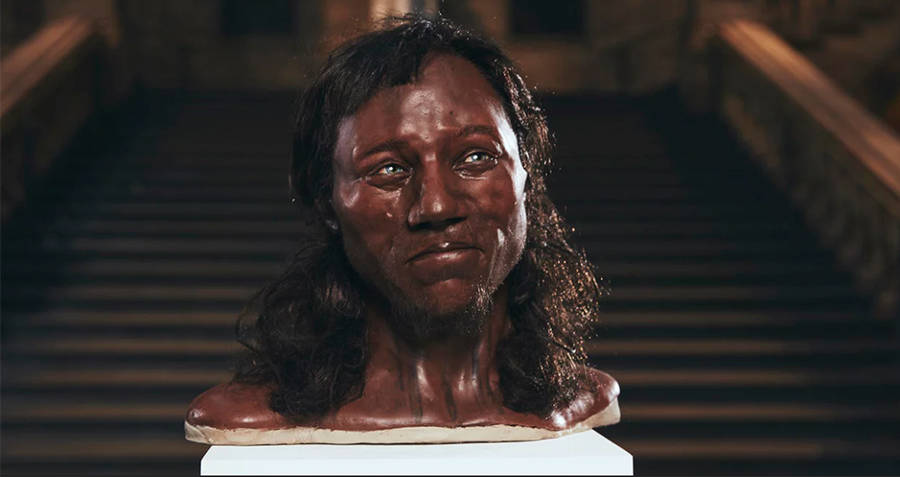The DNA pulled from the fossil suggest that the earliest Europeans look nothing like scientists thought.

The GuardianThe bust of Cheddar Man, depicting his dark skin and hair, and light blue eyes.
Over a century ago, a fossil was unearthed of a man in Cheddar Gorge in Somerset, England. At the time, researchers believed that the man, known as “Cheddar Man,” likely had fair hair and light eyes and skin as the modern day Britons do. New DNA research, however, has proved that wrong.
Using DNA extracted from the fossil, scientists have discovered that while Cheddar Man had blue eyes, he also had dark brown to black skin and dark curly hair.
The discovery suggests that the genes for lighter skin weren’t always as widespread and that they didn’t pop up until much later. In short, skin color was not always a determining factor for geographic origin, as it is often seen today.
“It really shows up that these imaginary racial categories that we have are really very modern constructions or very recent constructions, that really are not applicable to the past at all,” said Tom Booth, an archaeologist at London’s Natural History Museum. The museum is where the search for Cheddar Man’s ancient DNA began as well as where the findings will be displayed.
In order to extract DNA from the 10,000-year-old fossil, scientists at the museum drilled a tiny hole into the skull and drew a small sample of bone powder. From the powder, they were able to isolate a full genome, which led them to their conclusions.
They determined that Cheddar Man likely originated in the Middle East, from African ancestry. Later, he traveled with a small population to Europe using an ancient land bridge known as the Doggerland. According to archaeologists, about 10 percent of modern white British ancestry descended from this population.
As for the difference between Cheddar Man’s complexion and that of modern Britons, scientists believe it was an evolutionary trait. Over the years, the skin tone of the European populations likely became lighter, as it absorbs more sunlight and vitamin D, which people living in the cooler, cloudier climate would have required.
The findings from the DNA extractions have been used by museum artists to create a bust of Cheddar Man, as he would have looked 10,000 years ago. The artist behind the bust, which takes into account his dark hair and skin, and light eyes, hope that the depiction will help people understand the origins of skin tone, and how wrong some of the stereotypes surrounding it are.
“It’s a story all about migrations throughout history,” said bust artist Alfons Kennis. “It maybe gets rid of the idea that you have to look a certain way to be from somewhere. We are all immigrants.”
Next, check out the family who had blue skin for hundreds of years. Then, check out the group of Canaanite descendants that scientsts thought had been wiped out.





